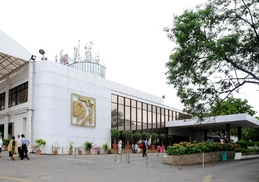
+91 8095511877

+91 8095511877
Tetralogy of Fallot (TOF) is a major heart defect, which is a combination of 4 heart defects. It causes affected children to have a bluish tinge of their lips and nails, especially when they walk/run. It worsens with time. Surgical repair of the defect is needed for children to get better.
The ideal age of repair is six months to 1year of age. The quality and quantity of life are good after repair.
If the parents are wondering why their child got TOF, there is no straightforward answer. TOF is a developmental disorder present at birth. What exactly causes it is not very clear. There are certain factors affecting mothers during pregnancy that increase the risk of TOF and other heart defects in babies.
Some of the known risk factors are a family history of heart defects, mother on certain medications in early pregnancy, diabetes in mother from early pregnancy, IVF pregnancy, anomaly scan showing a defect in any other organ system of the fetus (brain, gut, kidney, etc.).
In 30-40% of children with TOF, one of the chromosomes may have an abnormal arrangement of genes in it. This abnormal arrangement causes TOF in the heart.
It also causes problems in other body parts like a cleft in the palate or the lip, immunity issues, developmental delay, and calcium level maintenance issues.
It is important to know how the normal heart works for you to understand TOF better. See figure 1 below

The left heart has two chambers, and the right heart has two chambers. The top 2 chambers (Right Atrium or RA and Left Atrium or LA) are the collecting chambers, while the bottom two chambers (RV and LV) are pumping chambers. The LV pumps pure (red) blood to the whole body.
The body’s organs use the oxygen in that blood and make the blood impure (blue). The impure (blue) blood returns to the RA and is pumped by the RV to the lungs.
When we breathe, the oxygen in our breath enters the blood and makes it pure again. The pure blood enters LA and is pumped out to the body by the LV.
Thus the heart supports two circuits. The left circuit pumps pure blood to the body, and the right circuit pumps impure blood to the lungs.
In a child with a TOF, blood cannot leave the RV easily as the exit (1) is narrow. So some blue blood of the RV goes across the VSD (2) and out through the aorta to the body. (3) and (4) are also seen in figure 2.

Narrowing of the pulmonary valve and artery decreases the blood flow to the baby’s lungs. So blood from the RV exits through the VSD into the aorta, and this blue blood mixes with the red, and the baby’s skin tone, lips, nail beds look blue. The blue-ness increases when the baby cries or is feeling cold.
The most common symptoms are:
The most common signs are
Echocardiography-This is the main test to diagnose TOF. Other tests include ECG, CT scan, cardiac catheterization, genetic tests (FISH for chromosome 22q11 deletion).
TOF requires surgical correction. The best time for the surgery is between 6 months to 1 year age. Certain babies who become very sick from it or possess tiny pulmonary arteries need an additional bypass shunt surgery (called BT shunt) even earlier. The BT shunt helps the baby become less sick or helps the tiny pulmonary arteries grow. Your pediatric cardiologist/surgeon can give you more details about this.
The main steps in the surgery planned for total correction (called intracardiac repair) are
Closure of VSD
Widening of the narrow pulmonary valve and pulmonary artery
The baby’s heart will then have normal circulation. The surgery will be for around 4-5 hours. The post-operative ICU course is also critical. The major milestones in the ICU are getting off the ventilator safely and coming off the infused intravenous medications to maintain normal vital signs.
Lifelong follow up is essential. The child will have to go for Echocardiography/ECG/exercise stress test, and occasionally CT scans for surveillance of the repair. Certain children with leaky pulmonary valves develop heart failure and may need repeat surgery or a cardiac catheterization procedure.
There are other less common complications of a repaired TOF.
Overall, the quality and quantity of life after repair of TOF is good. Your child can have a normal childhood and adult life. As mentioned above, constant visits to pediatric cardiac OPD is essential


This article has been reviewed for medical correctness and relevance by
Dr Swati Garekar
Dr Swati Garekar is Consultant Pediatric Cardiologist and Head, Division of Pediatric Cardiology, Fortis Hospital, Mulund, Mumbai, India.Her special interests include echocardiography and fetal imaging, 3D printed heart models and heart failure.

Apollo Chennai

Apollo Health City

Apollo Indraprastha

Aster CMI

Fortis Escorts

Fortis Mulund
Frequently Asked Questions
What is the best age for Tetrology of Fallot (TOF) surgery?
What are the common signs of Tetralogy of Fallot?
Is untreated Tetralogy of Fallot fatal?
What are the complications of Tetralogy of Fallot?
What is the cost of Tetralogy of Fallot surgery in India?